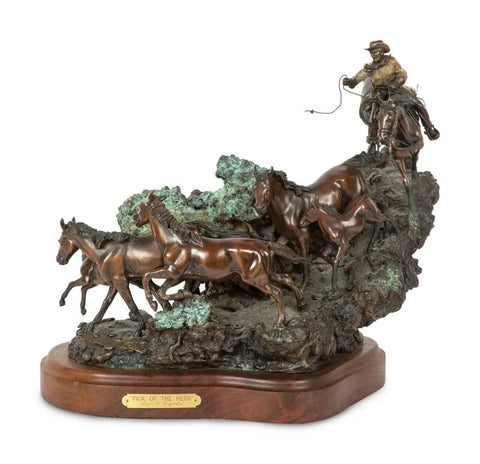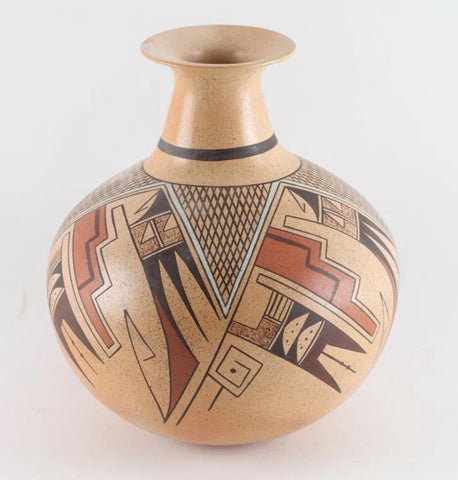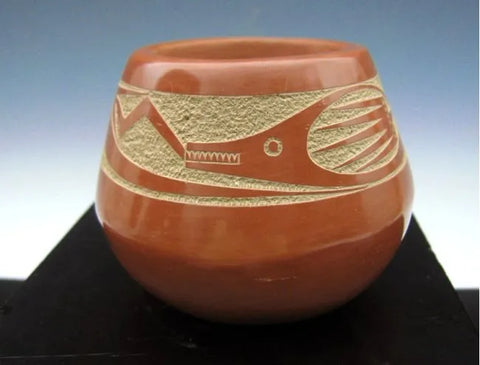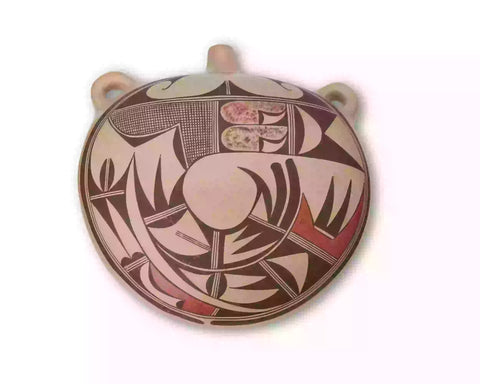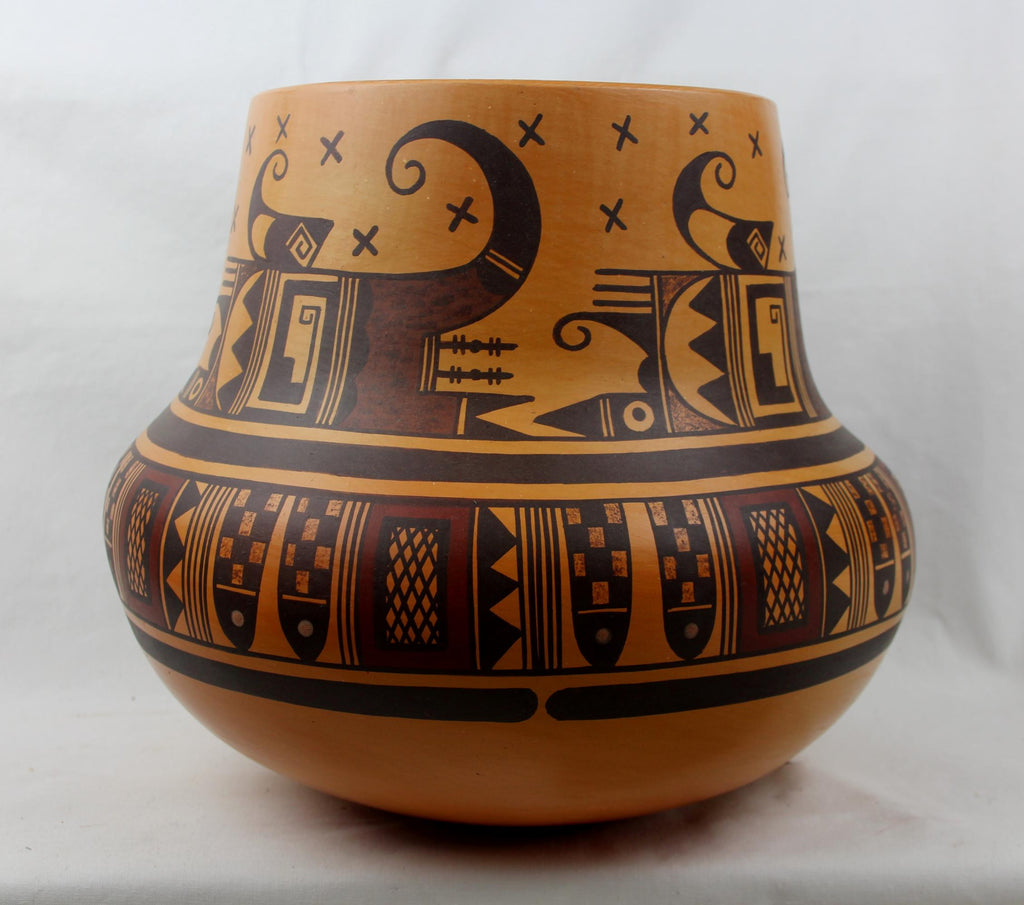
Native American Extraordinary Large Traditional Hopi Poly Chrome Pottery Jar, by Dee Setalla, # 1545 Sold
$ 4,475.00
Description: #1545 Native American Extraordinary Large Traditional Hopi Poly Chrome Pottery Jar, by Dee Setalla. Dee spent approximately 4-5 weeks creating this work of art from the start of acquiring the clay and firing the final piece. A hand written description of the symbology used in the piece and their meanings is also included with this item, making it a true "one of a kind piece".
Dimensions: Height-10 1/2 inches x width-11.5 inches
Condition: Excellent for its age
Provenance: Dee Stella
Building the Pot!!! In Dee’s own words.
“Earth clay is dug in rock form, and is put in a bucket with half water and clay. The clay sits overnight. The following day, it will be worked with the hand to make a putty like substance. Once that is completed, it will be poured through a fine thin cloth into another bucket to get out small rocks and sticks. Once poured, the bucket will be poured into a pillow case, tied and set out in the sun until it is a texture to mold with”.
“All my pots are built by the coiling method. Gourd sherds are used for shaping the pot. Once the pot is built, it will set to dry. The pot will then be sanded with sandstone rocks. After this has been completed, it will be damped and smoothed with riverbed rocks”.
“The design will come next. All designs are painted on with a very fine Yucca stem. Colors include: Black (Bee Weed Plant) Maroon (Yellow iron rock), White (White clay), and red (the Santo Domingo Pueblo clay)”.
“Once the Pot is completed with the painting, it will be placed in the oven at a broil temp for an hour to dry out all the moisture in between the coils of the pot. Once this has been completed, it will be transferred to an outdoor firing, which would be feed by dried sheep dung. The temp will get up to 1800 degrees. Pots will fire for about 3 hours. This would be the final stage”.
“This particular pot took me about a little over a month to complete from collecting the clay, molding, to painting, and then firing. The orange warm marks are a sign that it has fired by traditional way”.
“I have been making pots since I was 11 years old. Teachers were my mom and grandmother who are both renowned potters. I will continue to carry on the legacy of my mom and grandmother and most importantly my ancestors. There are many books and newspapers that feature my work”.
“Thank you
Dee J Setella”
"Dee Setalla, Hopi Pueblo, is a son of Pauline Setalla brother of Gwen Setalla, Agnes Nahsonhoya, Stetson Setalla, Justina Setalla and Karen Namoki. Nephew of Fawn Navasie. He is therefore in the Frog Woman and Feather Woman families. He credits his mother for teaching him not only how to form and decorate a vessel but for the proper respect for Mother Nature when gathering clay. He strongly believes that when working with clay, the potter is bringing to life a new being and it must be respected and nurtured. Many of the older potters hold such beliefs, but it is interesting to see that a younger generation can have such feelings as well". Reference: Hopi-Tewa Pottery: 500 Artist Biographies by Gregory Schaaf. (Source: adobe Gallery)
-----------
View the other items in my shop: http://www.etsy.com/shop/CulturalPatina?ref=shopsection_shophome_leftnavDescription:












